Lantana camara (Lantana)
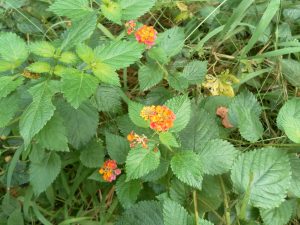

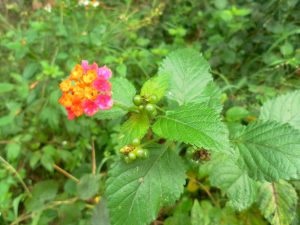
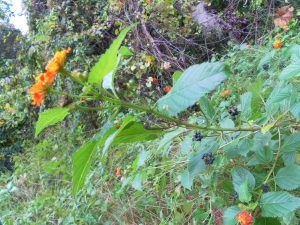
Lantana camara, or simply just called lantana, was introduced to Florida in 1804 as an ornamental plant from the West Indies (MacDonald et al. 2008). This member of the Verbenaceae family is currently listed as a Category I by the Florida Exotic Pest Plant Council (MacDonald et al. 2008, Wunderlin and Hansen 2008). In the 1700s, Lantana was a highly desired greenhouse specimen and consequently bred into hundreds of cultivars in European markets and from there, introduced worldwide (MacDonald et al. 2008). Lantana camara is similar to L. depressa, Florida’s native species, which is now endangered. After its introduction worldwide, lantana is now also considered invasive internationally in Australia, New Zealand, China as well as in the United States (Florida, Georgia, Texas, California and Hawaii) (MacDonald et al. 2008).

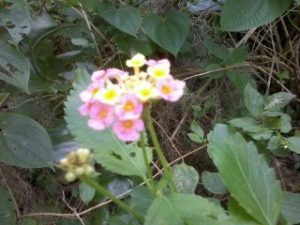
Photo by J. Baniszewski
Lantana stalks have been used for paper pulp (wrapping, writing and printing paper), bark has been used as lotion, notably for ulcers caused by leprosy, and leaves have been used to treat swelling and body pains (MacDonald et al. 2008). In addition, alkaloids in lantana can stimulate bowel movements, lower blood pressure and accelerate deep respiration. The plant thrives under numerous conditions of sun, shade, moisture and dry areas and can grow in forests, along roadsides, pastures, and notably citrus groves. Lantana can be problematic economically in Florida citrus groves as well as in pastures where it is toxic to cattle and other livestock (MacDonald et al. 2008). Lantana camara can inhibit other plants from growing nearby due to allelopathic substances in its roots and shoots (Wunderlin and Hansen 2008).
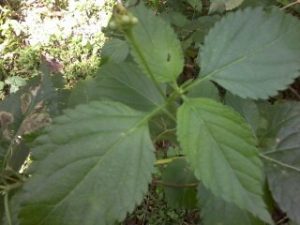
Photo by J. Baniszewski
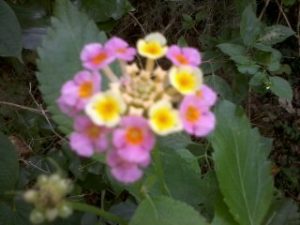
Photo by J. Baniszewski
The shrub is an erect perennial that may grow to be 6 feet tall. Leaves of lantana are rough with a sandpaper-like texture, ovate, and oppositely arranged. They are also aromatic when crushed, serrate and about 6 inches in length and 2.5 inches across (MacDonald et al. 2008). The small flowers are clustered at stem ends and change colors such as white to pink to lavender or yellow to orange to red with the most mature flowers being more darkly colored. Flowers are produced year round and a single plant has potential to produce 12,000 fruits (MacDonald et al. 2008). Fruits are about 0.2 inches in diameter, round and also change color from green to purple and finally black. Lantana can reproduce vegetatively or by seed. Self or cross pollination can occur (MacDonald et al. 2008). One interesting feature of lantana seeds are that the germination rate increases after seeds are passed through animal’s digestive system. Vegetative reproduction occurs when a stem of lantana comes in contact with wet soil and allows root formation to occur (MacDonald et al. 2008).
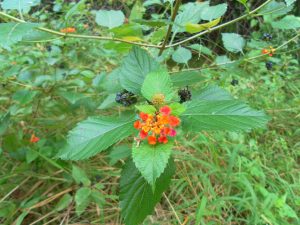
Management of lantana is most successful when combining different mechanisms such as burning, chemical applications, manual removal, preventative measures and restoring a natural biodiversity. Prevention mechanisms include removing flower heads which reduces the number of seeds produced or by simply removing the plant from the landscape. Culturally, a habitat with natural biodiversity will help offset potential establishment of lantana (MacDonald et al. 2008). Effective mechanical control may include a plan to use fire or cutting of lantana. Biological control efforts have yields some benefit. In Hawaii, over 20 agents of biological control have been released. Of these, a caterpillar, Hypena strigata, a fly, Ophiomyia lantanae and a lace bug, Teleonemia scrupulusa, have shown the greatest potential. Chemical means often yield regrowth, but Glyphosate can be used or Fluroxypyr plus aminopyralid can be applied for some effect (MacDonald et al. 2008).
Links: